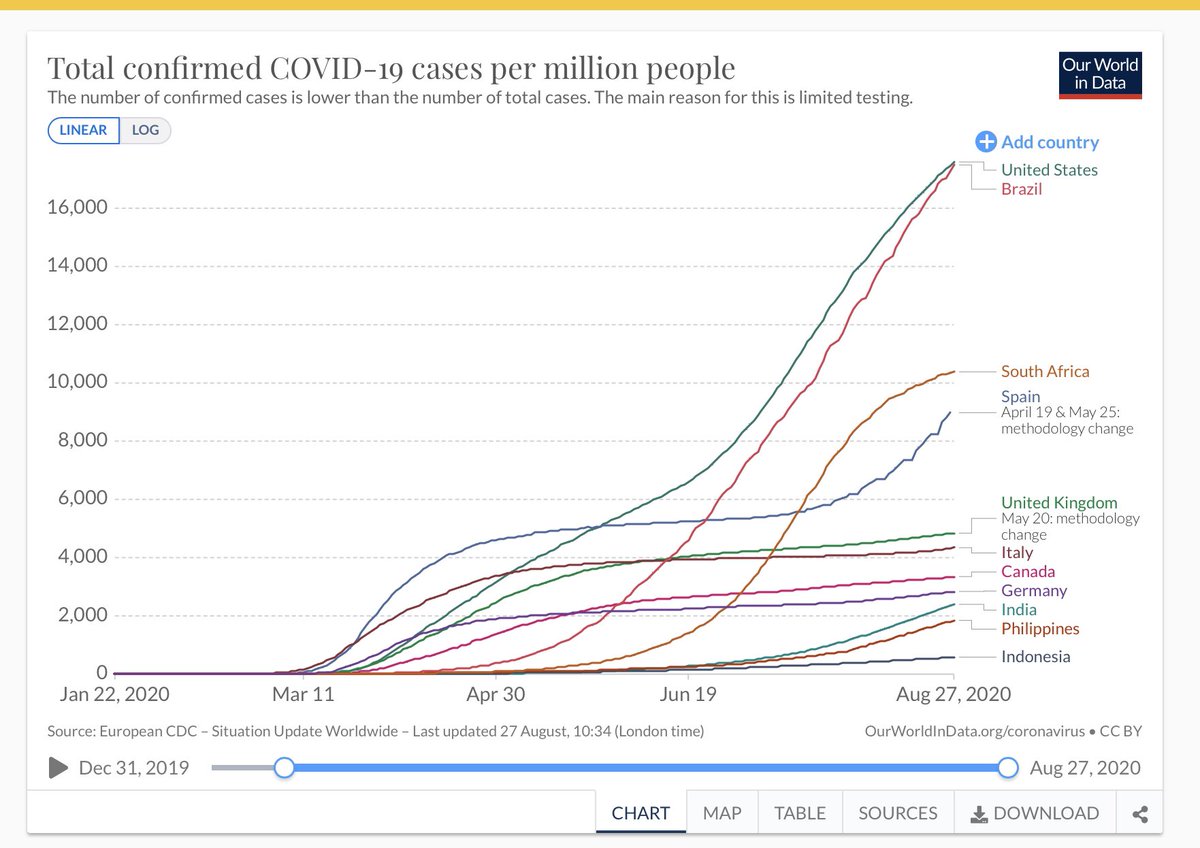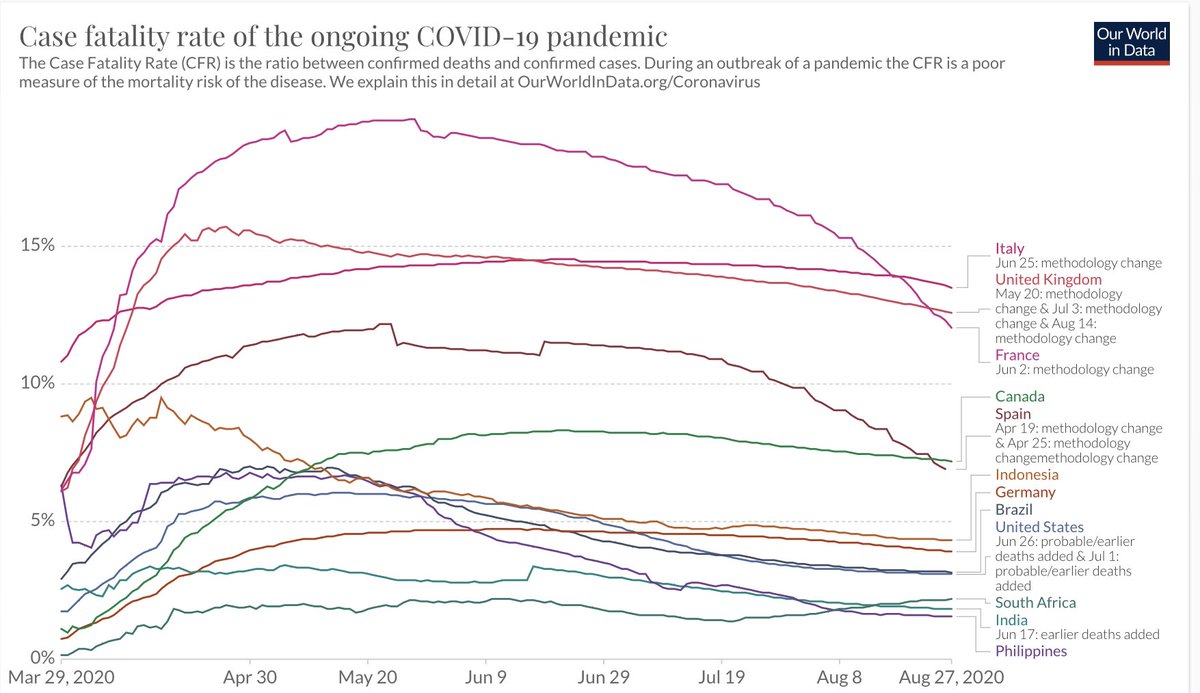Forcing myself look at intl COVID metrics every week or so. I usually don’t look at deaths, but... this isn’t what I was expecting.
Look for the Philippines.
Look for the Philippines.
That’s a huge part of SOME of the variation, especially when I hear that more than half of confirmed deaths in places like the US and UK came out of elder care homes. And I’ve been wondering for months what this means for places like the Philippines, where it’s almost unheard of https://twitter.com/wanderer_jasnah/status/1299277543854485506">https://twitter.com/wanderer_...
Can only speak to what I’ve seen, but elderly live with their families unless they basically need to be moved to a hospital. And depending on socio-econ status, maybe not after then. There’s virtually no ‘assisted living’ places like we parked my grandparents in at a certain age. https://twitter.com/wanderer_jasnah/status/1299277829310492673">https://twitter.com/wanderer_...
But when I run what I presume this looks like as an epidemiological model in my head, you get a lot of early non-random deaths with particularly vulnerable pops in the US and UK because it hits where they’re all concentrated. But randomly distrubuted in places like Philippines
Such that on a long enough timeline without a vaccine, CFR’s all converge. What’s odd to me is that places with the highest confirmed cases generally also have the most abnormally high CFR’s, whereas the smaller p/c outbreaks are much closer to what we think the IFR is.

 Read on Twitter
Read on Twitter








